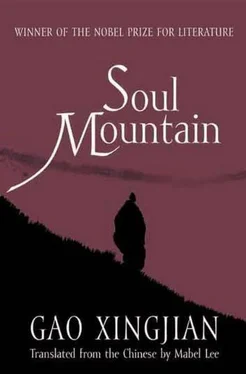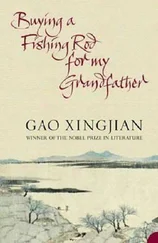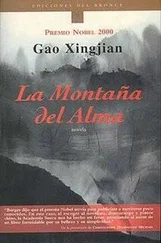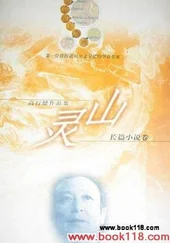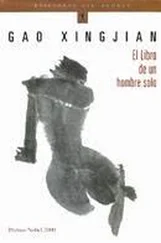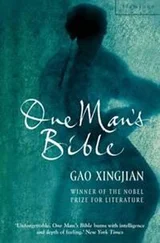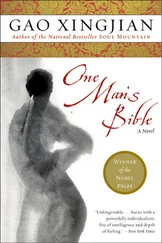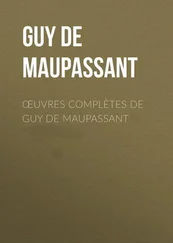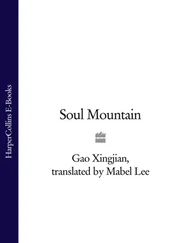And I see the spirit house of woven bamboo pasted with coloured paper on top of the coffin and the surrounding wall made of branches. At the grave site a number of pyres are burning and each of the families of the clan of the deceased sit around one of these. The flames burn higher and higher as the sound of the dirge cuts through the night air. The people there leap and dance, beat drums and gongs, and fire rifles. People come weeping and wailing into the world. That they should make a big commotion before leaving, actually, is in keeping with their innate nature.
These practices are not unique to the Yi people in the mountain stockades of this highlands. Vestiges of these rituals are still to be found throughout the vast delta of the Yangtze but, generally, they have become vulgarized and have lost the original meaning of this great commotion. Fengdu, in Sichuan province, is known as the City of Ghosts and is the original location of the ancient Ba people. Recently, at the funeral of the father of the manager of a department store in the county town, they had a spirit house decked with strips of paper on the coffin. The bicycles of people who had come for the funeral lined one side of the gate and the other side was piled with wreathes, paper people and paper horses. By the road three tables of musicians took turns playing right through the night but the grieving relatives, friends and associates didn’t sing the dirges or do the funeral dances and instead played poker at the card tables which filled the courtyard. When I tried to take a photograph of these contemporary funeral practices my camera was seized by the manager who demanded to see my credentials.
There are still plenty of people who can sing the dirges. In the Jingzhou and Jiangling regions where the Chu people originate, the dirges have been transmitted to the present. They are known also as tub-beating songs and are performed with wine libations by village Daoists. Documented evidence of this can be found in the Zhuangzi . When Zhuangzi was in mourning for his wife he beat on a tub and sang, treating mourning as a joyous event. His singing, I expect, was very loud.
Recent research on the Yi people has advanced evidence that Fuxi, the first ancestor of the Han people, had the tiger totem of the Yi people. There are vestiges of the tiger totem everywhere among the Ba people and in the Chu region. A Han Dynasty brick excavated in Sichuan province has an engraving of the Queen Mother of the West which is definitely a tigress with a human face. In this Yi singer’s mountain stockade, by the fence of woven chaste tree branches, I saw two children crawling about and playing. Both were wearing cloth hats embroidered with red tiger heads similar in style to the tiger head hats which I saw on children in the mountain regions of southern Jiangxi province and southern Anhui province. Even the clever and intelligent Jiangsu and Zhejiang people, who originate from the ancient Wu and Yue kingdoms in the lower reaches of the Yangtze, retain a fear of tigresses. Could it be that the totem worship of the tiger in matrilineal societies exists in people’s subconscious memory? History is bewildering: it is only the singing of the bimo which is loud and clear.
I ask the singer whether he can give me a rough translation of the text. He says it points out the way to the nether world for the spirit of the dead person, tells of the deities of Heaven and the deities of the four directions, tells of the deities of the mountains and the deities of the rivers, and finally tells of where our ancestors have come from. By following the route indicated, the spirit of the deceased will be able to return to his ancestral land.
I also ask the bimo how many rifles were used at the largest funeral he had conducted. He stops to think, then, with the singer translating, says one hundred. However, he has seen a funeral with as many as twelve hundred rifles. This was the funeral of a chieftain’s family: his father had conducted the funeral. At the time, he was only fifteen and had gone with his father to help. They are a hereditary bimo family.
A Yi cadre from the village enthusiastically secures a small jeep to take me to Yancang to see the enormous ancient “facing heaven” grave of a Yi king. It is a fifty-metre-high circular mound with a concave top.
During the time when people all went crazy about bringing land under cultivation for the sake of the revolution, they tore down the stones from the three-storey grave surrounds and reduced them to lime. They even dug up and smashed all the earthenware urns containing the remains and planted corn at the top of the bald mound. Now all that is left are a few desolate stunted bushes and the wind. Yi scholarship has shown that the graves of the ancient Ba kingdom documented in the Han Dynasty work Record of the Kingdom of Huayang are similar to these “facing heaven” graves of the Yi people. In both cases they originate in the practices of ancestor worship and the observing of celestial phenomena.
In his opinion, the ancestors of the Yi people come from the Aba region of north-west Sichuan province and share a common ancestry with the ancient Qiang people. This was where Yu the Great was born and he was a descendant of the Qiang people: I agree with him. The skin, facial features and stature of the Qiang and Yi people are very similar, I have just come from that region, I say, and I can testify to this. He pats me on the shoulder and immediately invites me home to drink and we become friends. I ask whether the Yi people have to drink blood in liquor when they form a friendship. He says yes, that a rooster has to be killed and its blood dripped into the liquor. However as he already has the rooster cooking in the pot you will have to wait for it to cook, then eat it with the liquor. He has a daughter who’s just gone to Beijing to attend university and he asks me to help look after her. Also, he’s written a film script based on an ancient orally-transmitted Yi epic: of course, it’s a tragic story. He says if I can help him find a filmmaker, he can organize a team of Yi horsemen for the film. I hazard a guess that he is a Black Yi: the Black Yi used to be the slave-owning aristocracy. He doesn’t deny this. He says last year when he was in the Daliang Mountains a local Yi cadre turned out to have a common ancestor ten or so, or several ten, I’ve forgotten which, generations ago.
I ask him whether in the past clan classifications of Yi society were very strict, for example, if men and women of the same clan married or had a sexual relationship were both parties put to death? If maternal cousins married or had a sexual relationship were they punished by death? If a White Yi slave and a woman of the Black Yi aristocracy had a sexual relationship, was the man put to death and the woman forced to suicide?
He says, “Yes, but didn’t you Han people ever have these sorts of things?”
After thinking about it, yes.
I’ve heard that the death by suicide sentences were hanging, taking poison, slitting the stomach, drowning and jumping over a cliff, and that the death by execution sentences were strangulation, beating, being tied to a rock and drowned, being pushed over a cliff, or being killed with a sword or spear. I ask if this was the case.
He says, “That’s more or less correct, but wasn’t it the same with you Han people?”
As soon as I thought about it, in fact, yes.
I also ask him whether there were cruel punishments such as chopping off the heels, chopping off fingers, gouging out the eyes, piercing the eyes, slicing off the ears and spiking the nose.
He says, “We had all these, but of course in the past. They aren’t much different from what happened during the Cultural Revolution.”
I think this is in fact the case and I cease to be shocked.
Читать дальше
Конец ознакомительного отрывка
Купить книгу
